
02 Apr This is Hayman’s Gin
Meet the lineup of Hayman’s Gin, the only independent distiller still making True English Gin. by Gandor BronkhorstphotographyAlbert van Beeck Calkoen/Hayman’s Gin The story of Hayman’s gin is story of True English gin.
Balanced, classic and nuanced.
As such, Hayman’s is still made the traditional way: with a slow, two-day distillation process.
In the words of Miranda Hayman, “we’re not just doing this because we’re stuck in the past. We do this because it simply makes a better drink.’ The products of this family distillery follow the historical development of gin and always based on the family recipe.
Hayman’s London Dry Gin
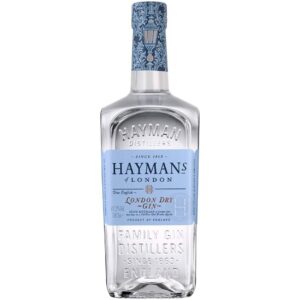
Just because a gin is distilled in England does not mean it is a gin made in 150-year-old tradition.
At Hayman’s London Dry, it is.
And that means: following the traditional two-day distilling process and using nineteenth-century recipes, this comes as close to history as is possible.
The London Dry is perfectly balanced, with a solid backbone of juniper and citrus notes.
Only ten carefully selected botanicals – along with British grains, of course – are distilled in traditional copper stills.
Exactly as the Hayman family’s forefathers did in 1863.
The makers are especially proud of the role coriander seed plays in their distillate.
Other flavorings include licorice, angelica root, nutmeg, cinnamon, cassia bark, orris root and dried lemon and orange peels.
Read more information about the London Dry Gin here
Hayman’s Gently Rested Gin
 The Gently Rested Gin (41.3%), has been aged for three weeks in old Scotch whisky barrels. Not because that’s the trend, but because that’s how the gin used to be drunk in London’s gin palaces in the mid-nineteenth century. ‘When my grandfather still worked in the distillery, he worked with wooden barrels. Not because of the taste they gave off, but because the gin was transported in them. Steel tanks came later. The gins drunk in the legendary London “Gin Palaces” in the nineteenth century always had a very small amount of wood. We tried to imitate that, but of course to the taste of today.’ And that touch of wood brings out not only citrus flavors, but peppery notes.
The Gently Rested Gin (41.3%), has been aged for three weeks in old Scotch whisky barrels. Not because that’s the trend, but because that’s how the gin used to be drunk in London’s gin palaces in the mid-nineteenth century. ‘When my grandfather still worked in the distillery, he worked with wooden barrels. Not because of the taste they gave off, but because the gin was transported in them. Steel tanks came later. The gins drunk in the legendary London “Gin Palaces” in the nineteenth century always had a very small amount of wood. We tried to imitate that, but of course to the taste of today.’ And that touch of wood brings out not only citrus flavors, but peppery notes.
Hayman’s Old Tom Gin
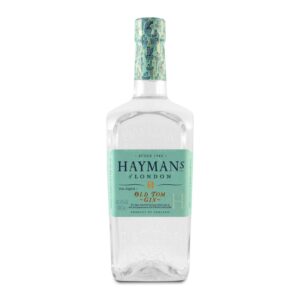 Back to Victorian times of high moral standards and secret gintaps!
Back to Victorian times of high moral standards and secret gintaps!
Anyone who found an effigy of a black cat in the window on a London street around the end of the nineteenth century could make their thirst clear with some arcane cat language.
When your meowing was answered with the same sound, from a trunk inside the cat could expect a shot of gin for what today we would call a Lidl price.
The style gin of that era is called Old Tom, and is one of the specialties of London distiller Hayman.
The Old Tom has the same botanicals as the London Dry, but in larger quantities.
A touch of sugar is also added to make the taste even fuller.
TIP: read how to make a great Hayman’s Tom Collins here
Hayman’s Royal Dock
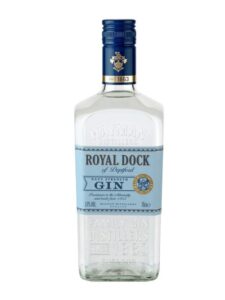 This Navy Strength gin was first produced by the Hayman family for the Royal British Navy in 1863.
This Navy Strength gin was first produced by the Hayman family for the Royal British Navy in 1863.
And with this maritime gin, naturally comes a very manly flavor profile.
Thus, the alcohol content is a very serious 57%, making the taste buds churn considerably.
The distillate is powerful, bold and at the same time very cleverly balanced.
Expect hearty juniper, some coriander and sharp citrus, followed by more floral undertones. See more information about Hayman’s Gin here
Hayman’s Sloe Gin
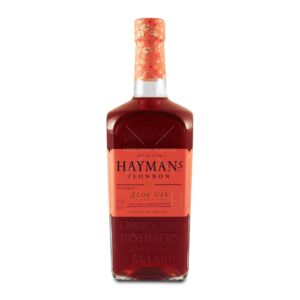 Although it is one of the oldest gins, Sloe Gin is not yet widely known.
Although it is one of the oldest gins, Sloe Gin is not yet widely known.
Why that is?
Perhaps because it has an unexpected flavor, but maybe it’s also just a matter of “unknown makes unloved. Still, Sloe Gin is well worth discovering, especially in the fall.
A sweet-sour-bitter drink based on gin and sloe berries, or blackthorn berries (which, contrary to what the name suggests, are not berries, but very small plums).
These are used with pith and all during distillation, so some almond notes can even be tasted in them.
That traditional making process gives the gin a complexity all of its own and at the same time is a great balancing act in the boilers: just enough sweet, sour, gin and even some bitterness.
Craftsmanship in the bottle, in short.
Hayman’s Rare Cut
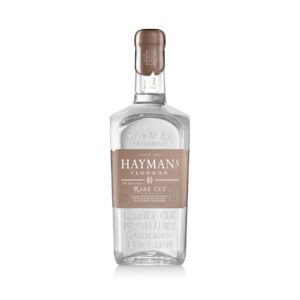 This is perhaps the most modern gin Hayman’s makes, although even this recipe goes back more than fifty years.
This is perhaps the most modern gin Hayman’s makes, although even this recipe goes back more than fifty years.
In fact, in October 1969, Christopher Hayman joined the family business, of which he remains an important part today.
And to celebrate that joyous moment, Hayman’s has created a Limited Edition Gin that Christopher Hayman personally worked on, resulting in a bright and balanced True English Gin with a serious alcohol content of 50%!
In this gin, expect a nose of juniper and fresh citrus with underlying notes of pepper.
The taste is that of a classic, balanced London Dry Gin, with a stronger intensity of botanicals thanks to the high alcohol content.
A classic gin that is best enjoyed in an equally classic cocktail: the Martini. TIP: read how to make a great Martini here!For more information: see Haymansgin.com



No Comments